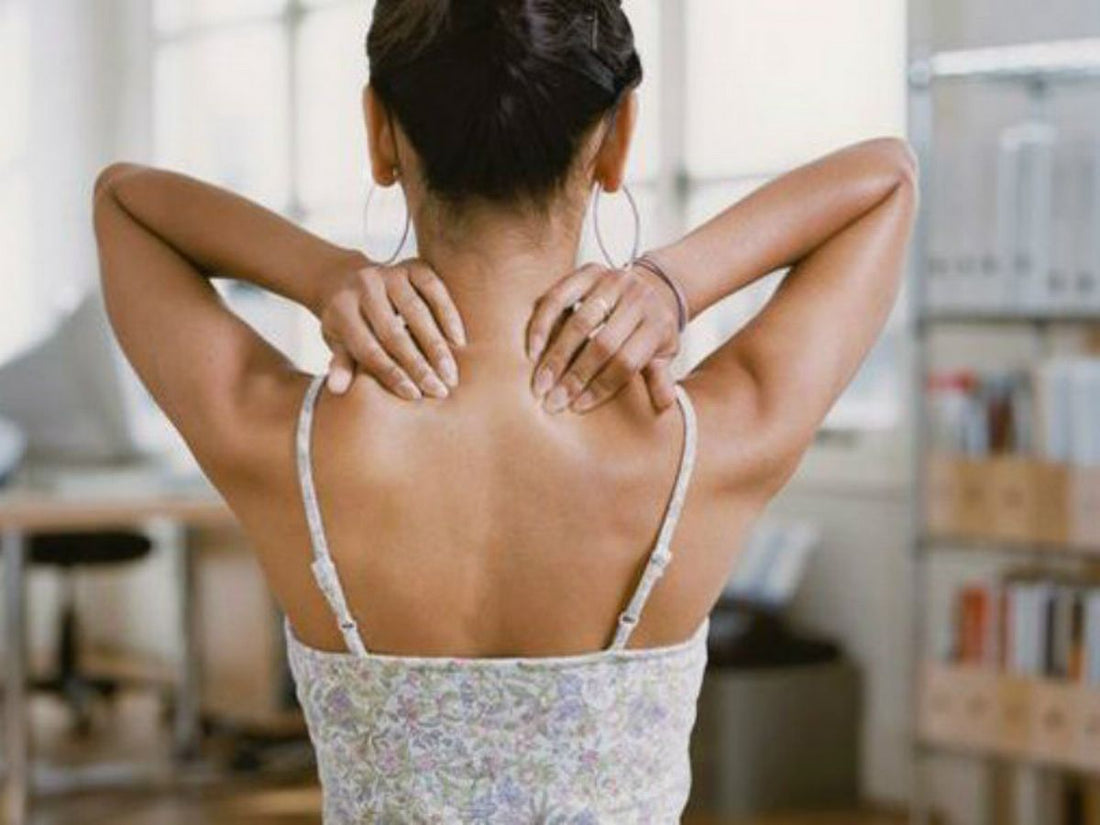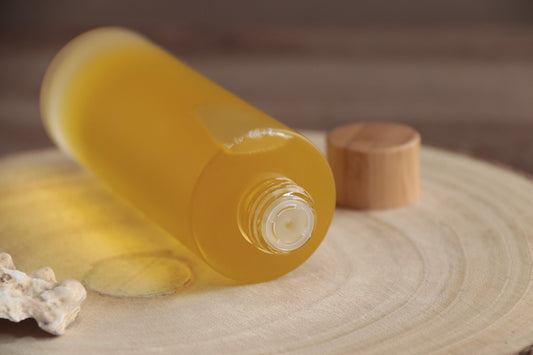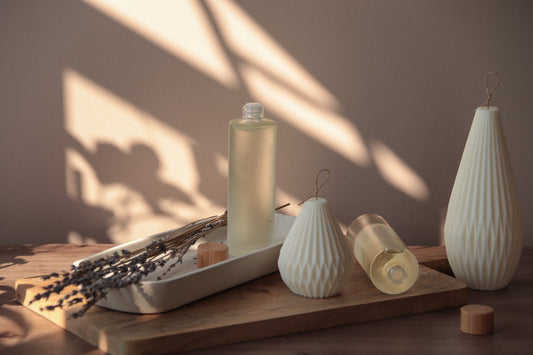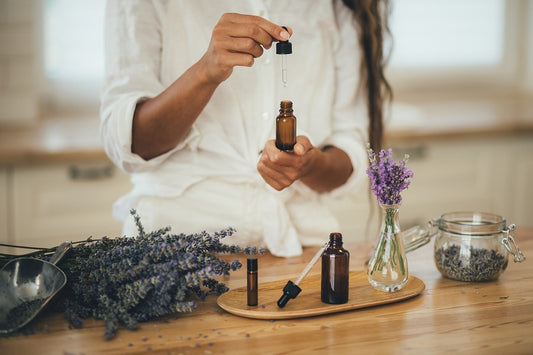If you're feeling tense, stressed out, sore and achy after a long week of work, Self Massage is one way to help your mind and body release this tension, in the comfort of your own bedroom, with just your two hands and some scented Massage Oil...
Here is our step by step guide to your Self Massage experience!
1. Get comfortable
Find a quiet, comfy spot where you won't be easily distracted. Bedrooms are usually the preferred space as this is the room our minds associate with sleep and rest, which naturally encourages our brains to start unwinding. Practice a few light stretches or simply take a moment of mindfulness and deep breathing before you begin.

2. Set the mood
Dim the lighting, light some candles or pop your favourite Essential Oils into your diffuser. If music helps you relax, put on your favourite playlist. Whatever you choose to do, make sure it helps to create a calming environment.
3. Choose your Oil
Each combination of Essential Oils has its own unique purpose. To release muscular tension and soothe achiness, blends containing Rosemary, Ginger, Peppermint, Chamomile or Frankincense are best. To relax the mind and calm emotional stress, select a blend with Lavender, Sweet Orange, Spearmint or Ylang Ylang, and to promote feelings of happiness, confidence and self-love, choose a blend with Rose, Cinnamon, Lemongrass or Clary Sage. Woody scents like Sandalwood and Pine help us to feel more grounded, whilst citrus and minty fragrances awaken the senses and focus the mind. Choose an Oil that best suits both your physical as well as emotional needs, and if you're unsure, just message us for a recommendation!
4. Identify your problem areas
People hold stress in different places. Personally I feel all my tension in my shoulders, neck and upper arms, whilst my partner holds his stress in his lower back and calves. Take a moment to become mindful of your physical body, and begin a short mental scan of each area, from your head, neck, shoulders and arms, to your back, stomach, hips, legs and feet. What areas often feel sore and achy? When you move, which muscles feel tight and tense? These are your personal problem area's, and the parts of your body that need the most attention.
5. Time to Massage!
To begin, warm your Massage Oil in between your palms. Start from the top of your body (Head, neck, shoulders and arms) and move downwards (towards the stomach, hips, legs and feet) as you work on each area. Choose your first problem area and begin lightly massaging in Circular and Long Sweeping motions, using whichever hand is easiest. These techniques help to promote circulation in the area, encouraging lymphatic drainage and warming up the muscles and tissue, preparing the area for deeper massage.

- Petrissage, Pinching and Pressing
When the area is warmed, well oiled and ready for a deeper treatment, you can begin using your fingers, thumbs and palms to press, pinch, roll and knead the area. This squeezing of the fibres stimulates deep blood flow, releases tension and strengthens the muscle.
- Working out knots
Knots are comprised of tense fibres within the muscle or fascial tissue, and known as myofascial trigger points. Trigger points can be Active, meaning they are producing pain within the body, or Latent, which means that you don't really feel it unless you push on it, causing an aching sensation. Myofascial trigger points can appear anywhere in the body, but the most common areas include the neck and shoulders, back, hips and calves. They can be caused by direct injury, such as a break, twist or sprain, but can also develop through emotional stress, poor posture, and repetitive or lack of movement. Knots aren't dangerous, however, if left untreated they can cause other problems within the body, such as headaches, neck pain, back pain, tennis elbow and carpal tunnel. A knot feels a bit like a hard lump within the muscle. Apply pressure with your thumbs or palms (depending on the area) and use small circular motions to work it out.
- Tapotement
This is the chopping motion most commonly recognised in sports massage. Using a cupped or open hand, 'tap' or 'beat' down on the area (as though drumming but with the sides of your hands) quickly and with as much pressure as you are comfortable with. This technique helps to stimulate local blood flow and, depending on how long it's done for, can both sedate and invigorate the tissue.
- Using knuckles
In Self Massage, the knuckles are generally used to apply a little extra pressure than the fingertips can offer on larger areas, such as the shoulders and hips. The knuckles allow us to work out tougher knots that require more pressure for longer periods of time. The lower knuckles (closest to the palm) are best for lower areas such as the hips, thighs and calves, whereas the higher knuckles (closest to your fingertips) are best for working out knots in the shoulders and neck.
- Using Tools
There are many different tools that are available nowadays to aid self massage. Gua Sha stones and Crystal Rollers are perfect for reducing tension and inflammation in the face, jaw and neck, whilst Foam Rollers and Balls help to work out knots and increase blood flow to the feet, legs and back. Vibrating massagers are also popular these days, and for a good reason! Vibration helps to stimulate the nervous system, loosens up the muscle fibres and promotes circulation. Some side effects of vibration massages have been recognised though, including headaches and nausea, so if you'd like to try this technique we'd recommend starting on a low setting for a short amount of time and building up to higher settings for longer periods once you know how these tools effect you personally.
- Using the right pressure for each area
Different area's of the body require different levels of pressure in massage. For the face, especially around the eyes, very light pressure applied only by the tips of the fingers is recommended. However, for larger areas such as the shoulders, back, hips and thighs, much more pressure can be applied and the thumbs, palms, knuckles and sometimes even forearms are used as needed.




